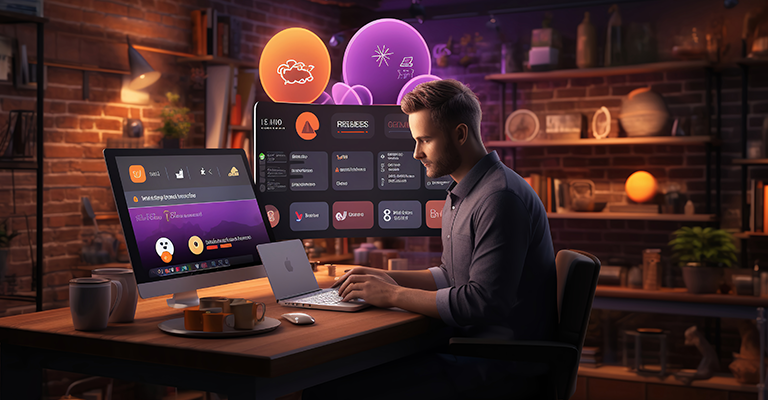It has become crucial to keep updating with the times and evolving technologies. So should our products, services, and offerings. The most important is the face of it all – the company website. Apart from being constantly updated, it’s also critical for the website to be revamped periodically.
Analysing how the website functions in its present form before starting the overhaul is an exhaustive process. Put together a team to evaluate the relevance and freshness of your content, design, and responsiveness of dynamic elements.
However, a couple of pertinent questions to ask before starting this project is – What has changed now in today’s time? How can a brand like yours identify outdated information and assess whether the content aligns with your business goals.
There’s so much to do! So, let’s delve into the blog and get into the finer details.
#1 The Right Resources and Team

The project manager must put together a team of highly skilled designers and developers to produce a stunning makeover. At the designer front – Web Designers and UX pros. Developers in all their shapes and forms should be onboarded – Front-end, Back-end and Full Stack. Additionally, you’d also need a Quality Tester, Content Writer, SEO Specialist, and Security Expert to make for a rewarding website experience for every single visitor.
#2 Review Competitor Websites

The next step in this development project is to review websites that align with your platform or business categories. Some websites can serve as inspiration for designing UI and UX for your website. In some instances, it’s best to follow set standards that fit the overall website design. Ecommerce websites are a fitting reference for this. Most of them focus on product showcase with a clean layout and neatly listed categories for users to explore.
#3 Defining Goals and Objectives

The foremost purpose of a website revamp should be pre-defined business goals. A new fresh new website can help a business increase online sales, improve brand awareness, broaden the lead pipeline, and improve user engagement.
A good line of SMART Objectives to abide could be:
- Increase website traffic by 20% within six months.
- Improve conversion rates by 15% in the next quarter.
- Enhance mobile responsiveness to reduce bounce rates by 10% within three months.
- Increase social media engagement by 25% in the next year.
- Launch a blog section and publish two high-quality articles per week to boost SEO.
The top priority while devising the goals and objectives is to assign a defined timeline. It’s best to break down the entire process into stages and executing it in planned deadlines.
#4 Content Optimization

Content experts play a significant role throughout the process. They must scan through every line on the website to identify content that is outdated. Performing a keyword search is rudimentary to make the website content SEO-friendly. Use descriptive and keyword-rich title and meta descriptions to ensure good search engine rankings.
Last but not the least, make sure you get your H1, H2, H3 header tags in place.
#5 Technical Considerations

Compare the current technology stack with any scope for upgradation. There are constant advancements in web development technologies and a shift to the latest stack can greatly enhance the project. Ensure that the website is compatible with all popular browsers. Perform extensive cross-browser testing to identify and resolve compatibility issues.
Once the pages are ready, optimize the website for faster page loading speed. Faster loading speeds contributes to positive user experience and improved SEO.
Utilize Content Delivery Network (CDN) to distribute content across multiple servers. This results in reduced latency and improved server delivery of website content. You can also consider upgrading or migrating the CMS (Content Management System) if the website is using one.
The web development team should also undertake security audit and compliance measures to ensure that the website is up to date with the latest security covers. A check on the GDPR and ADA compliance is a good addition to round off the technical details.
#6 Power Up the Dynamic Elements

While re-designing the website, you must give special attention to how you develop the UI and UX. Both largely depend on the dynamic elements of the website. These are features that change in real-time based on user interaction or data inputs. Live feeds, notifications, carousels, and sliders are rather commonly seen to make web pages interactive. Infinite scrolling offers a great outlet to increase visitor duration.
AJAX (Asynchronous JavaScript and XML) allows websites to send and receive data asynchronously, enabling dynamic content updates without refreshing the entire page. This technology is often used in features like live search suggestions or updating pages without a full reload.
A massive range of customization, designing, and enhancements is possible once you decide to revamp your website. These insights are shared by the Dust Value website development team who recently revamped our company website. Stay tuned to check out our all-new website which will be published soon, which was redesigned to sport a new look, offer enhanced user experience, and improve brand equity!
